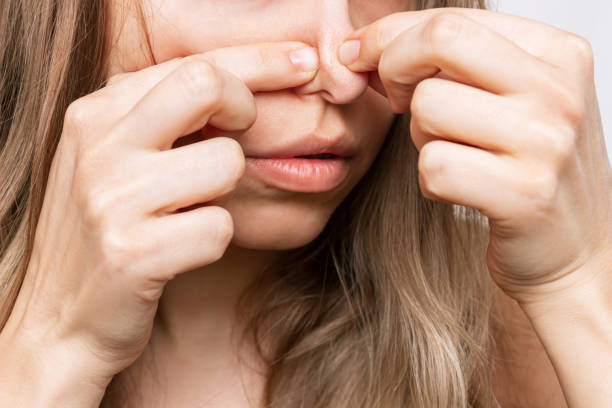Is your skin feeling tight, irritated, or extra sensitive?
If yes, you may be dealing with a damaged skin barrier, a very common skin concern that can lead to redness, flakiness, breakouts, and increased sensitivity. The Good News is that you can naturally repair your skin barrier with the proper skincare regimen and lifestyle choices backed by science. Let’s get into the step-by-step guide to restoring your skin!

What Is the Skin Barrier & Why Is It Important?
The skin barrier (or stratum corneum) is the topmost layer of the skin and is the shield which:
- Locks in moisture
- Protects from pollution & bacteria
- Prevents water loss
Scientific Research: A study in the International Journal of Molecular Sciences revealed that a healthy skin barrier minimizes trans-epidermal water loss (TEWL), which prevents dehydration, inflammation, and premature aging.
How Does the Skin Barrier Get Damaged?
Your skin barrier might start to weaken for the following reasons:
- Over-exfoliation: Using AHAs, BHAs, or scrubs too often.
- Harsh cleansers and hot water: Cleansing with surfactants strips your skin of its natural oils.
- Lack of hydration: Low ceramides = moisture loss.
- UV exposure and pollution: They damage skin cells.
- Stress and a poor diet: It affect the repair of skin.
Recent research confirms that UV radiation affects the skin barrier by affecting lipids, increasing water loss, and lowering hydration, resulting in dryness, irritation, and premature aging.
Step-by-Step Guide to Repair Your Skin Barrier

Step 1: A Gentle Cleanser
What to do? Use a pH-balanced cleanser that cleanses without stripping your skin.
Scientific Research: A study found that ceramide-based cleansers caused significant improvement in skin hydration and barrier function.
The best ingredients for skin barrier repair: Ceramides & hyaluronic acid
Step 2: Replenish Your Skin Barrier with Ceramides & Fatty Acids
Refill your barrier with a ceramide, cholesterol, and fatty acid-inclusive moisturizer. A 2025 study showed that a 3:1:1 ratio of ceramides, cholesterol, and fatty acids restores barrier function faster than ceramides alone.
What to look for: Ceramide and omega-3-rich cream
Step 3: Strengthen Your Barrier with Niacinamide (Vitamin B3)
Apply a niacinamide serum of at least 5% to address inflammation and promote ceramide production. According to research, 5% niacinamide improves barrier function, reduces redness, and enhances moisture retention in as little as 12 weeks.
Best Niacinamide Products:
✔ The Ordinary Niacinamide 10% Zinc 1%- Affordable & effective
✔ Paula’s Choice 10% Niacinamide Booster – High-strength yet gentle.
Step 4: Stop Over-Exfoliating & Avoid Harsh Ingredients
So what to do? Stop using AHAs, BHAs, scrubs, and retinol until you recover your barrier.
🚫 No alcohol toners, sulfates, or foaming cleansers
🚫 Reduce retinol to 2-3 times weekly
Studies reveal that excessive exfoliation creates micro-tears in the skin, increasing sensitivity and breakouts.
Step 5: Protect with SPF 50+ Every Single Day
Well, just apply a broad-spectrum sunscreen containing either zinc oxide or Tinosorb S. A study in Advanced Pharmaceutical Bulletin shows that daily use of SPF protects the skin from UV damage, which can harm the skin barrier.
Step 6: Improve Your Skin Barrier from the Inside Out
A compact list of nutritional and lifestyle changes that can help repair the skin is given below. It should also be noted that these changes will have a considerable impact on skin repair:
- Eat Omega-3s – Salmon, walnuts, flaxseeds (to decrease inflammation)
- Drink 2-3L of water a day – Hydration = healthy barrier
- Sleep for 7-9 hours – and skin repairs itself at night
Scientific Research: A study in Frontiers in Immunology confirms that omega-3 fatty acids reduce inflammation and enhance skin barrier health.
What NOT to Do During Skin Barrier Healing
While healing a damaged skin barrier, it is important to avoid products that can disturb or strip the skin. Scent products, whether synthetic or natural, often trigger sensitivity, stinging, or redness, making them worse.
Clay masks, while great for oily skin under normal conditions, are too drying and can spoil the tightness and layer during repair.
Exfoliants – both physical (such as scrub) and chemical (such as AHAS, BHA, or retinoids) – can seriously increase the weak skin, causing subtle or swelling.
Finally, alcohol-based toners disrupt the natural lipids and pH balance of the skin, delaying the treatment process. Instead, stay with aroma-free, hydrating, and minimally irritating products that support the repair of obstruction without additional stress.
Unique Insights for Faster Skin Barrier Repair
Try Fermented Skincare Ingredients (Galactomyces & Bifida Ferment)
Fermented ingredients help skin microbes, improve hydration, and strengthen skin barrier function.
Research: A study in the Journal of Clinical Medicine found that Galactomyces Ferment Filtrate increases skin hydration and strengthens the barrier against pollutants.
DIY Oatmeal Mask for Barrier Repair
Colloidal oatmeal has been clinically proven to reduce redness, itchiness, and inflammation.
Recipe:
2 tbsp colloidal oatmeal
1 tbsp honey
1 tbsp yogurt
Apply for 15 minutes, then rinse with lukewarm water.
Top 10 Natural Ingredients for Skincare in 2025 (Expert Guide)
Final Thoughts: Heal & Protect Your Skin Barrier for Healthy, Glowing Skin!
When the skin barrier is damaged, it may become dry, irritated, and prone to acne. Here is a step-by-step guide with scientifically based ingredients and a few tweaks to your lifestyle that will work wonders in repairing and strengthening your skin barrier!
Make it a priority to pamper your skin gently. Get started right away and shine naturally.
Recommended Reads
Zero-Waste Skincare Routine: Eco-Friendly Beauty for Conscious Consumers
Biotech Skincare Innovations: The Future of Beauty in 2025
AI Personalized Skincare: Future Routines for UK & USA
Have you ever felt lost in the endless aisles of skincare products, wondering which one…
How to Get Rid of Blackheads Fast at Home
Blackheads can be disappointing, especially when cleaning your skin quickly before a big day or…
How to Get Rid of Blackheads: 7 Proven Steps for Clear, Healthy Skin
Blackheads – Tiny dark spots caused by clogged pores – are a universal skincare concern. “Blackhead removal,” “How…
Glass Skin Routine for Dry Skin UK | Hydrated, Radiant Skin
Achieving glass skin for dry skin in the UK can feel impossible with the cold,…
Summer Skincare Guide: Prevent Sun Damage & Breakouts
As the days grow longer and the sun shines brighter across the UK and the…
Blue Light Damage & Skin: What You Need to Know (2025)
In our increasingly digital world, prolonged exposure to screens has raised concerns about the effects of…
Discover more from The Healthcare Diary
Subscribe to get the latest posts sent to your email.






Pingback: Seasonal Skincare Routine: Adapt for UK & USA Weather - The Healthcare Diary
Pingback: Best Skin Routine for UK & USA 2025– Dermatologist Tips - The Healthcare Diary
Pingback: K-Beauty Skincare Routine: Achieve Flawless Glass Skin - The Healthcare Diary
Pingback: Sensitive Skin Care: Best Products & Remedies for Healthy Skin - The Healthcare Diary
Pingback: Acne Treatments: Causes & Dermatologist Tips for Clearer Skin - The Healthcare Diary
Pingback: Are Freckles a Sign of Sun Damage? How to Protect Your Skin - The Healthcare Diary
Pingback: Is Glycolic Acid Safe for Sensitive Skin in 2025? | Exfoliation Guide - The Healthcare Diary